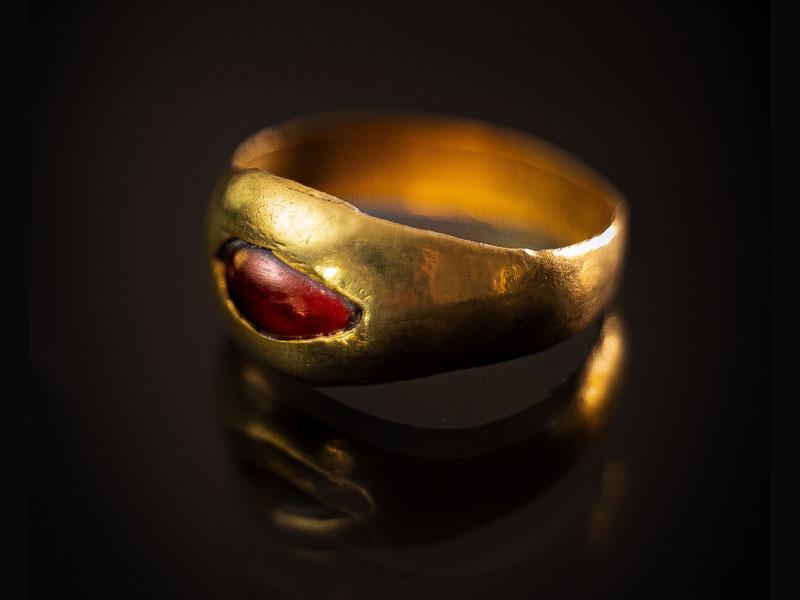The ring was found in the joint Israel Antiquities Authority – Tel Aviv University excavation. Its small diameter leads experts to suggest it is a child’s ring, either girl or boy, who lived in Jerusalem during the Hellenistic period.

(Communicated by the IAA Spokesperson)
Dr. Yiftah Shalev and Riki Zalut Har-Tov, Israel Antiquities Authority Excavation Directors, said, “The ring is very small. It would fit a woman’s pinky, or a young girl or boy’s finger. Dr. Marion Zindel says the ring was manufactured by hammering thin pre-cut gold leaves onto a metal ring base. Stylistically it reflects the common fashion of the Persian and Early Hellenistic periods, dating from the late 4th to early 3rd century BCE and onwards. In that period people began to prefer gold with set stones rather than decorated gold.
Professor Yuval Gadot of Tel Aviv University and excavator Efrat Bocher note, “The recently found gold ring joins other ornaments of the early Hellenistic period found in the City of David excavations, including the horned-animal earring and the decorated gold bead.” The scholars point out, “The Givati Parking Lot excavation finds are beginning to paint a new picture of the nature and stature of Jerusalem’s inhabitants in the Early Hellenistic Period. Whereas in the past we found only a few structures and finds from this era, and thus most scholars assumed Jerusalem was then a small town, limited to the top of the southeastern slope (“City of David”) and with relatively very few resources, these new finds tell a different story: The aggregate of revealed structures now constitute an entire neighborhood. They attest to both domestic and public buildings, and that the city extended from the hilltop westward. The character of the buildings – and now of course, the gold finds and other discoveries, display the city’s healthy economy and even its elite status. It certainly seems that the city’s residents were open to the widespread Hellenistic style and influences prevalent also in the eastern Mediterranean Basin.”
Gold jewelry was well-known in the Hellenistic world, from Alexander the Great’s reign onward. His conquests helped spread and transport luxury goods and products. Often jewelry decorations were drawn from mythological figures or significant symbolic events.
